Hey guys, I'm a first time wood burner and I purchased a Drolet HT2000 stove to hook up to an existing chimney that the previous owner used for their stove. I the chimney inspected and swept and did some renovations that took about a year before I got to the point of ready to install.
I'm wondering how hard this is to install because I've read a couple posts where some have done it themselves, or should I use a pro service which has given quotes of $950 plus which includes the stove pipe. Looks like I can stand to save if doing it myself, and maybe after the season, get it inspected and swept. I'm a pretty good handyman and this looks simple enough, or, should I go with the pro?
The Job: Install Stove Pipe and Set Up Stove
There is some kind of cap fabricated that has a stainless reducer (7-6) with a cap on the end. The stove takes 6 and the chimney opening is 7, which would justify the reduction, but I don't think the current reducer was used with his stove.
My clearance to combustibles look good. The stove is sitting on my wood-look ceramic tile, underneath this in concrete. One pro told me to get a hearth pad, and I've looked at some, most of which are some type of ceramic tile. It seems a bit redundant to have to use this, but what do you guys think? Do I need one or not? Please explain beyond the protection of the finish on my tiles.
Was looking at stove pipe and HD and Lowes carry some, but looks like inferior products. Some local stores carry DuraVent and I was thinking of using this brand, any suggestions?
I have read a couple threads on over firing, and wonder if a damper on the stove pipe could help with an additional measure of control for this stove model?
Thank you for reading and your consideration. Any help is greatly appreciated. I have attached some pictures of my setup and install site.
I'm wondering how hard this is to install because I've read a couple posts where some have done it themselves, or should I use a pro service which has given quotes of $950 plus which includes the stove pipe. Looks like I can stand to save if doing it myself, and maybe after the season, get it inspected and swept. I'm a pretty good handyman and this looks simple enough, or, should I go with the pro?
The Job: Install Stove Pipe and Set Up Stove
There is some kind of cap fabricated that has a stainless reducer (7-6) with a cap on the end. The stove takes 6 and the chimney opening is 7, which would justify the reduction, but I don't think the current reducer was used with his stove.
My clearance to combustibles look good. The stove is sitting on my wood-look ceramic tile, underneath this in concrete. One pro told me to get a hearth pad, and I've looked at some, most of which are some type of ceramic tile. It seems a bit redundant to have to use this, but what do you guys think? Do I need one or not? Please explain beyond the protection of the finish on my tiles.
Was looking at stove pipe and HD and Lowes carry some, but looks like inferior products. Some local stores carry DuraVent and I was thinking of using this brand, any suggestions?
I have read a couple threads on over firing, and wonder if a damper on the stove pipe could help with an additional measure of control for this stove model?
Thank you for reading and your consideration. Any help is greatly appreciated. I have attached some pictures of my setup and install site.
Attachments
-
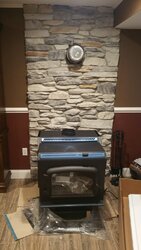 20181205_094407.jpg97.4 KB · Views: 387
20181205_094407.jpg97.4 KB · Views: 387 -
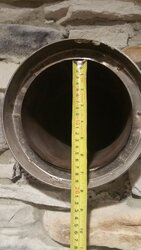 20181205_094555.jpg87 KB · Views: 347
20181205_094555.jpg87 KB · Views: 347 -
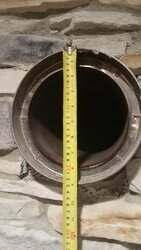 20181205_094602.jpg101.2 KB · Views: 370
20181205_094602.jpg101.2 KB · Views: 370 -
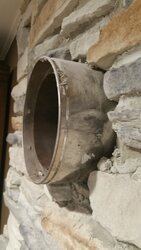 20181205_094612.jpg77.9 KB · Views: 311
20181205_094612.jpg77.9 KB · Views: 311 -
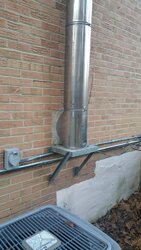 20181205_161222.jpg115.2 KB · Views: 327
20181205_161222.jpg115.2 KB · Views: 327 -
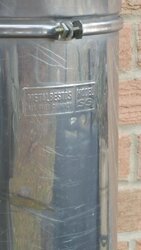 20181205_161258.jpg72.8 KB · Views: 322
20181205_161258.jpg72.8 KB · Views: 322 -
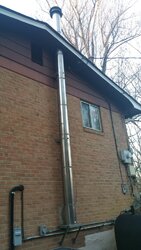 20181205_161313.jpg119.7 KB · Views: 377
20181205_161313.jpg119.7 KB · Views: 377 -
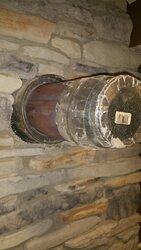 20181205_162147.jpg99.3 KB · Views: 312
20181205_162147.jpg99.3 KB · Views: 312 -
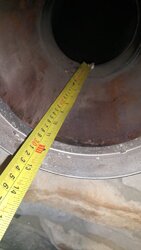 20181205_162917.jpg69.1 KB · Views: 292
20181205_162917.jpg69.1 KB · Views: 292 -
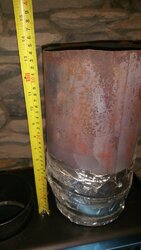 20181205_162942.jpg91.2 KB · Views: 307
20181205_162942.jpg91.2 KB · Views: 307 -
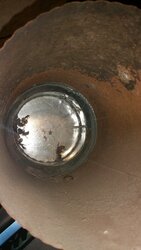 20181205_163000.jpg79.6 KB · Views: 342
20181205_163000.jpg79.6 KB · Views: 342 -
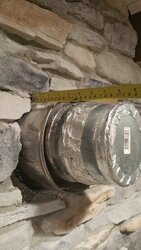 20181205_163110.jpg106.5 KB · Views: 265
20181205_163110.jpg106.5 KB · Views: 265


 My main concern is connecting to the chimney and reducing to 6. Does the pipe going into the chimney need to go the entire 1ft into the thimble then come out and reduce to 6 or ?
My main concern is connecting to the chimney and reducing to 6. Does the pipe going into the chimney need to go the entire 1ft into the thimble then come out and reduce to 6 or ?